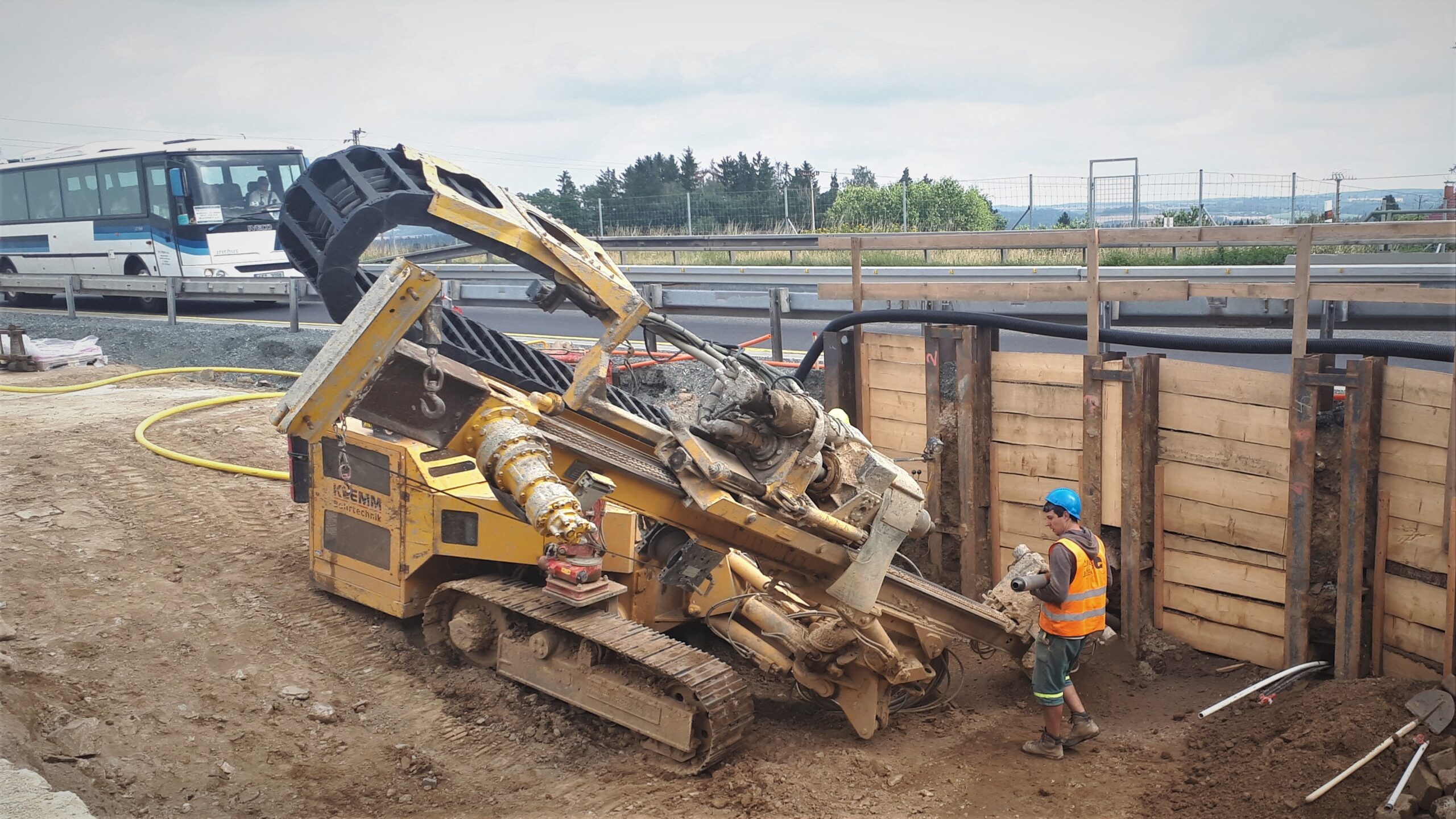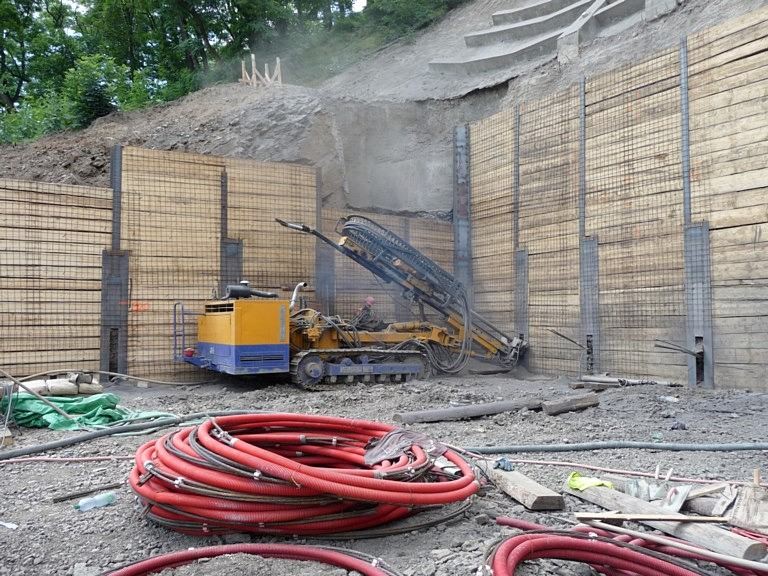Ground anchors
Ground anchors transfer tensile loads from structures into the subsoil. In order to minimize structure movement, the anchors are designed and executed. They help to achieve the highest stiffness within the economical consideration. The tiebacks are used for anchoring retaining walls, anchoring rocks, for remediations of landslides, to retain excavation sequences of tunnels and to secure structures against uplift and overturning.
Tiebacks consist of three main parts – head with jack, free length (tendor) and fixed length (grout), which is bonded with the subsoil by grouting. The anchors are prestressed, so that they differ from other structures used for deep foundations and excavations such as micropiles, tension piles or bolts.
Anchors are drilled into the soil or bedrock with a small diameter shaft (133 – 205 mm). The hole is filled with cement grout and the reinforcement is inserted into it. The reinforcement can be made from strands or bars. The grouting of the fixed length starts after 24 hours and it is executed gradually from the bottom to the designed top of the anchor's grout. The tieback can be prestressed after the next 10 – 12 days. The anchors can be prestressed through steel or reinforced concrete wales, through bearing plates (pile walls) or through concrete slabs, blocks and walls.
Ground anchores can be designed and executed as either as temporary or permanent.


